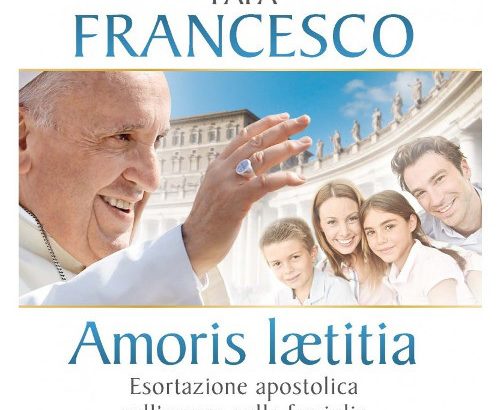The Pope in Ireland
The Pope’s most controversial document is an attempt to face reality, writes Greg Daly
“I see the Church as a field hospital after battle,” Pope Francis told the Jesuit Fr Antonio Spadaro in a September 2013 interview. “It is useless to ask a seriously injured person if he has high cholesterol and talk about the level of his blood sugars! You have to heal his wounds. Then we can talk about everything else.
“Heal the wounds, heal the wounds,” he continued. “And you have to start from the ground up.”
The image of the Church as a battlefield hospital is one the Argentine Pope has returned to on several occasions through his papacy. Drawn almost certainly from the classic Italian novel The Betrothed, it has underpinned his sense that ours is a ravaged world, one in which, as the Pontiff put it in Evangelii Gaudium, his first exhortation, “the family is experiencing a profound cultural crisis, as are all communities and social bonds”.
“In the case of the family,” he continued, “the weakening of these bonds is particularly serious because the family is the fundamental cell of society, where we learn to live with others despite our differences and to belong to one another; it is also the place where parents pass on the Faith to their children.”
Coming just weeks after the Pope had announced an extraordinary synod of bishops on the pastoral challenges to the family in the context of evangelisation, this pointed to one of the key issues the 2014 and 2015 synods of bishops would ponder: how can families pass on the Faith when the family has as an institution been under siege for decades?
These would not be the Church’s first synods on the family, of course. In 1981, for instance, St John Paul II had written Familiaris Consortio after a synod on the Christian family, mapping out a heroic vision as a bulwark against the rising tide of attacks on the Christian notions of marriage and family. Inspiring though that vision was, however, the line did not hold, and by 2013 it was very obvious to the new Pope that the Church needed to revisit this issue.
Violence
How, after all, could the Faith be passed on in families headed by single parents, families sundered by divorce, families where domestic violence is rife, families struggling with financial hardship and poverty, families in societies where religious faith is ridiculed or persecuted, families suffering and wandering because of wars and famines? And how can children and young adults raised in such situations become themselves prepared for Christian marriage and the formation of Christian families?
2014’s extraordinary synod of bishops was preceded by a consistory of cardinals that reflected on the questions the synod would consider, and by a questionnaire shared among dioceses and parishes by bishops’ conferences throughout the world in an attempt to gather input from Catholics at grassroots level globally.
The report of the 2014 synod and a subsequent questionnaire of laity were drawn on in preparations for 2015’s larger synod of bishops on the vocation and mission of the family in the Church and the modern world, which closed with Pope Francis stressing that the two-year synodal process “was not about finding exhaustive solutions for all the difficulties and uncertainties which challenge and threaten the family” but was about confronting them head on, “without burying our heads in the sand”.
Highlighting the “importance of the institution of the family and of marriage between a man and a woman, based on unity and indissolubility”, he took issue too with Catholics who he described as having closed hearts “which frequently hide even behind the Church’s teachings or good intentions” to “judge, sometimes with superiority and superficiality, difficult cases and wounded families”.
The fruit of this extensive process was revealed in April 2016 with the publication of Amoris Laetitia, or The Joy of Love, the Pope’s post-synodal apostolic exhortation on love in the family. Although written in simple language, Amoris is a long document and can be intimidating, so people approaching it for the first time might do well to start with the skeleton key to unlocking it proposed by Vienna’s Cardinal Christoph Schönborn at a July 2017 conference in Limerick’s Mary Immaculate College.
Describing the document as a whole – and adding that Pope Emeritus Benedict shares this view – as so complementary to St John Paul’s 1981 post-synodal exhortation Familiaris Consortio that the two form a ‘diptych’ he began by pointing to section 325 of the text as a “great summary” of the document.
The Pope’s tendency in Amoris to think of marriage as a journey is, he said, similar to that of St Thomas Aquinas: “There’s no family in a static way; each family is in via, as each of us is in via his whole life.”
With families being works in progress, looking towards their ultimate fulfilment in the Kingdom to come, he advised against demanding of marriage an unreasonable perfection, and said, “very often Pope Francis remembers that one of the main causes of failure is not asking too little of marriage, but too much”.
Acknowledging that imperfection is part of who we are, the cardinal then turned to section 320, which says a couple’s love reaches a healthy autonomy when each spouse realises only God can satisfy their deepest needs.
The World War II Lutheran pastor Dietrich Bonhoeffer, he quoted the document as saying, said couples’ spiritual journeys need to help them reach a point where they stop expecting from each other “something which is proper to the love of God alone”.
Witnesses
It’s worth continuing into Section 321, then, he said, noting how it presents the family as a ‘hospital’ in which Christian couples act as co-operators of God’s grace and witnesses of the Faith.
Turning from the document’s closing sections to its opening section 1, he said that if he were to share the central message of Amoris in, for example, a single phrase, he said it would be that “marriage and family are possible”, describing the exhortation as a great encouragement for marriage and the family.
The biblical foundations of marriage and the family, he said, as outlined in sections 19-21, do not shy away from reality. “For good reason,” he quoted, “Christ’s teaching on marriage is inserted in a dispute about divorce.” Citing biblical examples, he explained that this realism warns us against idealising the family, and calls us to view reality with mercy.
Sections 35-37, he said, outline the Pope’s approach, encouraging us to stand up for the values we can and must offer the world. It is not enough, he said, to reel off the world’s problems or just impose rules; instead we should responsibly and generously show why people should marry so as, in Pope Francis’ words, “to help men and women better to respond to the grace that God offers them”.
Urging those gathered to underline this, and to trust in God’s grace, he recalled too the Pope’s warning against burdening marriage with excessive idealisation, and highlighted how section 37 of Amoris observes “we have been called to form consciences not replace them”.
It is worth considering, he said, whether we really trust in the consciences of people who respond as best they can in difficult circumstances, noting how Pope Francis has observed that “a little step towards the good done under difficult circumstances can be more valuable than a moral solid life under confident circumstances”.
Section 49, he said, shows where Pope Francis comes from on this, outlining as it does the difficulties faced by poor households, single mothers, and others in need to whom the Church must offer understanding, comfort and acceptance, rather than turning God’s loving and healing message into stones to hurl at those in difficulty.
The fingerprints of St Thomas Aquinas can be found in section 123 of the document, he continued, in a passage defining love as a kind of friendship marked by concern for the good of the other and with marriage destined to last as it is rooted in the deepest inclinations of human nature, adding that Pope Francis’ realism is clear in sections 220 and 221, which details how with patience a maturing love learns to negotiate over time in a way that everyone wins.
Chapter eight of the document has been controversial since its publication, so it’s helpful to read the chapter – and especially sections 298 and 300 – in light of how in 1981’s Familiaris Consortio St John Paul II said that in dealing with situations where Catholics had civilly divorced and remarried, pastors must “for the sake of truth” exercise careful discernment of situations.
In other words, priests should not prejudge situations, but must put time into accompanying people and helping bring them into the life of the Church, especially through a deep and guided examination of conscience, entailing reflection around five questions about how their original marriage had broken down, and how they had acted since.
In some cases, Amoris says, reintegrating people in Church life may entail the help of the sacraments, but the document avoids saying what these cases might be. Instead the key sentence in section 300, the cardinal notes that “if we consider the immense variety of concrete situations such as those I have mentioned, it is understandable that neither the Synod nor this Exhortation could be expected to provide a new set of general rules, canonical in nature and applicable to all cases”.
When it comes to the fraught issue of whether some divorced-and-remarried people might be allowed to receive Communion, then, Amoris, doesn’t set out new rules – it teaches the classical understanding of marriage and it certainly doesn’t question the indissolubility of marriage – but instead builds on and attempts to give force to St John Paul II’s call for case-by-case discernment in this area.
The challenge is to live out the Church’s moral teaching on the ground, and for the Church to help couples and individuals do so.


 Greg Daly
Greg Daly
